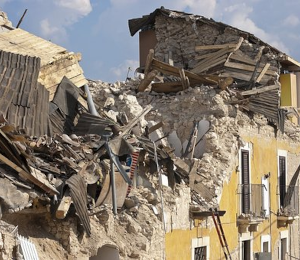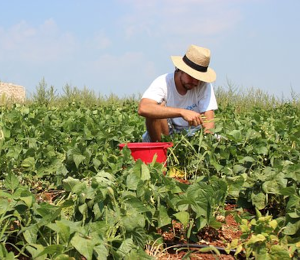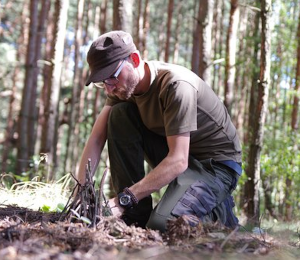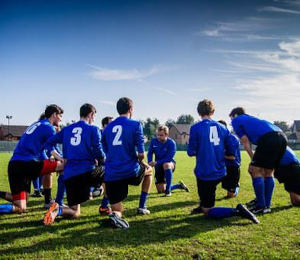Strategies for Connection and Support

In times of disaster, whether it be a natural calamity, a pandemic, or a human-made crisis, effective communication within families becomes paramount. The ability to stay connected, share information, and provide support can greatly influence how well a family copes with the challenges they face. In such moments of adversity, clear channels of communication can be a lifeline, fostering resilience and solidarity.
Communication can be especially challenging when families are spread out. For instance, a disaster might strike when some family members are at home, some are at school, some at work, and some living in other towns.
Let’s consider the importance of family communication during a crisis and offer strategies to facilitate effective communication and support.
Importance of Family Communication
When disaster strikes, families often find themselves in unfamiliar and stressful situations. Clear communication becomes essential for several reasons:
- Safety and Well-being: Communication enables families to convey safety instructions, share updates on the situation, and coordinate actions to ensure everyone’s well-being.
- Emotional Support: Disasters can evoke fear, anxiety, and uncertainty. Open communication allows family members to express their feelings, provide comfort to one another, and strengthen emotional bonds.
- Resource Management: Families may need to manage limited resources such as food, water, and medical supplies during a crisis. Effective communication helps in organizing resources efficiently and making collective decisions.
- Coordination of Responsibilities: Assigning tasks, sharing responsibilities, and coordinating efforts become crucial for navigating through challenging circumstances. Clear communication ensures that everyone knows their roles and contributes effectively.
Strategies for Effective Family Communication
Before the Event
- Establish Communication Channels: Identify reliable communication channels that can be used during emergencies. These may include mobile phones, messaging apps, social media, or two-way radios. Apps like GroupMe, Telegram, or Signal allow for group chats where family members can communicate simultaneously. Create a group specifically for emergency communication and add everyone to it. Ensure that everyone knows how to use these channels and has access to them.
- Establish a Communication Plan: Create a communication plan ahead of time. Determine primary and alternative methods of communication, such as phone calls, text messages, social media, or messaging apps. Make sure everyone knows how to reach each other and designate a central contact person if possible.
- Establish Meeting Points: Identify designated meeting points where family members can gather if communication is disrupted or if it’s unsafe to remain in their current location.
- Document Important Information: Keep important documents such as identification papers, insurance policies, medical records, and emergency contact numbers in a secure location that is easily accessible to all family members.
- Make Emergency Contact Cards: Provide each family member with a card containing emergency contact numbers, including out-of-town relatives or close friends. Keep these cards in wallets, backpacks, or purses.
- Identify Local Emergency Services: Familiarize yourself with local emergency protocols and services. Know how to contact local police, fire, and ambulance services. Sign up for any emergency alert systems provided by local governments or organizations. Identify local radio stations that provide emergency broadcasts.
- Check-In Protocol: Establish a check-in protocol so everyone can confirm their safety and whereabouts at regular intervals during an emergency. Decide on a frequency for check-ins and ensure everyone is aware of it.
- Plan for Different Scenarios: Anticipate various scenarios and plan accordingly. Discuss evacuation routes, emergency shelters, and contingency plans for different types of disasters to ensure preparedness.
- Practice and Review: Regularly review and practice your communication plan with family members to ensure everyone is familiar with the procedures. Update contact information as necessary.
During the Event
- Hold Regular Check-Ins: Schedule regular check-ins to provide updates, share information, and assess everyone’s well-being. These check-ins can be daily or as frequently as needed, depending on the severity of the situation.
- Listen to Authorities: Stay informed by listening to local authorities and emergency services for updates and instructions. They will provide guidance on any ongoing dangers, evacuation procedures, or resources available for assistance. Pass on any relevant instructions to family members.
- Share Important Information: Keep each other informed about the latest developments, safety protocols, evacuation procedures, and emergency contacts. Share relevant news updates from credible sources to avoid misinformation.
- Active Listening: Encourage open communication by actively listening to each other’s concerns, fears, and needs. Create a supportive environment where everyone feels comfortable expressing themselves without judgment.
- Stay Calm and Reassuring: In times of crisis, it’s essential to remain calm and composed, especially when communicating with children or elderly family members. Offer reassurance, provide factual information, and emphasize the importance of working together as a family.
- Practice Empathy and Understanding: Understand that each family member may respond differently to stress and uncertainty. Practice empathy, patience, and understanding towards one another’s emotions and coping mechanisms.
After the Event
- Contact Loved Ones: Reach out to family members, friends, and loved ones to let them know you’re safe and to check on their well-being. Use established communication channels and follow any emergency communication plans you have in place.
- Provide Help and Reassurance: Some family members may experience ongoing emotional trauma after a disaster. This can be especially true of children. Watch for changes in behavior or speech that might indicate anxiety. Provide extra emotional support, love, and assurance. See professional counsel if necessary.
- Assess Your Planning and Preparedness: Talk about how your communication plan worked–what went well and what didn’t. Discuss ways you can be better prepared for a future event, and update your plan accordingly.
By implementing these strategies, families can improve their ability to communicate effectively during emergencies, even when separated across different locations.

















